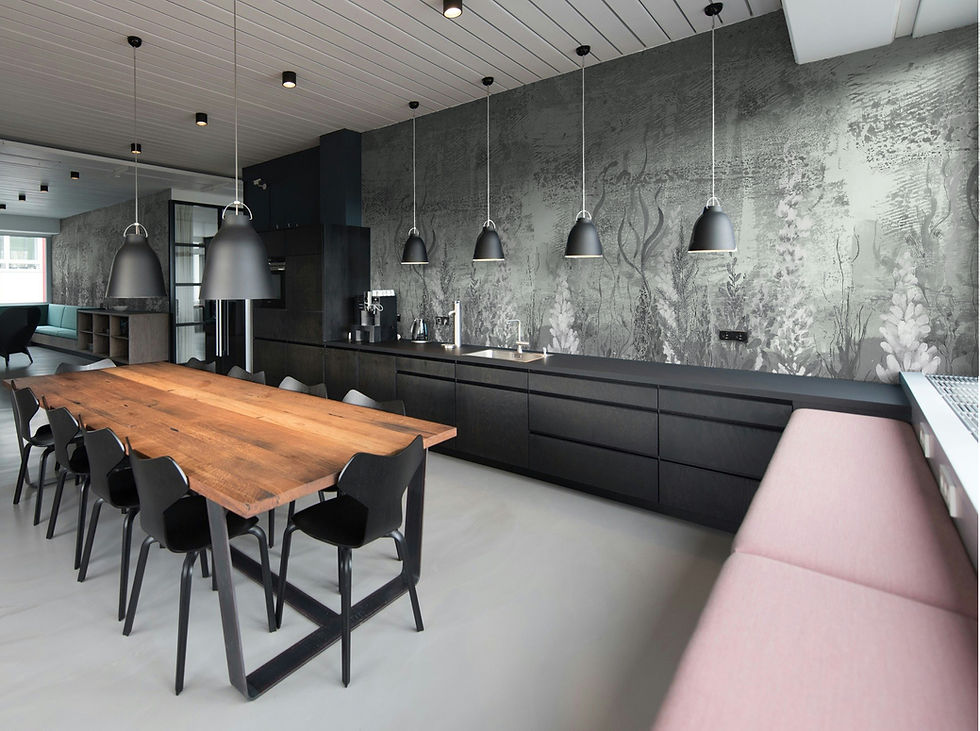Effective Tips for Removing Wallpaper Without Damaging Your Walls
- Guillermo
- Nov 4
- 4 min read
Removing wallpaper can feel overwhelming, especially if you worry about damaging the walls underneath. With the right approach, you can transform your space without causing harm. Whether you want a new look or need to refresh a room, knowing how to remove wallpaper carefully is crucial. This guide provides practical tips and techniques to ensure your walls stay intact during your home improvement project.
Understanding Wallpaper Types
Before starting the removal process, it’s essential to know the type of wallpaper you are dealing with. There are generally two types:
Strippable Wallpaper: Designed to be easily removed, this style pulls off in larger strips with minimal damage to the wall beneath.
Traditional Wallpaper: Often glued directly to the wall, this type can be more challenging to remove, sometimes leaving adhesive residue behind.
Identifying your wallpaper type helps you select the best removal method. For instance, approximately 70% of homeowners prefer strippable wallpaper because it makes DIY projects easier.
Gather Your Tools
Having the right tools ready can simplify the wallpaper removal process. Here’s a condensed list of necessary items:
Wallpaper scraper or putty knife: Essential for gently lifting wallpaper from the wall.
Wallpaper removal solution: You can use a commercial product or create a homemade solution with equal parts vinegar and water.
Spray bottle: For easy application of the solution.
Sponge or cloth: Helps with both applying the solution and cleaning up afterward.
Drop cloths: Protect your floors and furnishings from debris and moisture.
Preparing your workspace with these tools will help you work more effectively and efficiently.
Prepare the Room
Proper preparation is key before you start removing wallpaper. Follow these steps for a seamless experience:
Clear the Area: Move furniture away from walls and cover the floor with drop cloths. This protects your flooring from any debris or stains caused by moisture.
Turn Off Power: Shut off power to outlets or switches near the wallpaper to prevent accidents.
Ventilation: Ensure good airflow by opening windows and doors, especially if you are using chemical solutions. Proper ventilation helps reduce odor and aids drying.
These precautions will create a safe and efficient workspace. A well-prepared room can increase your efficiency by 30% or more, freeing up time for other projects.
Test a Small Area
Before you apply any removal solution to the entire wall, conduct a test on a small, inconspicuous area. This will show you how the wallpaper reacts and if it comes off easily.
Apply the Solution: Use your sponge or cloth to apply your removal solution to the test area generously.
Wait and Scrape: Give the solution a few minutes to work, then use your putty knife to gently scrape away the wallpaper.
Assess the Results: If the wallpaper releases easily without damaging the wall, you can proceed to the rest of the room.
Testing a small section first can save you from larger issues down the line, potentially preventing a costly repair of a damaged wall.
Apply the Wallpaper Removal Solution
Once you've tested the area and are ready to proceed, here’s how to apply the wallpaper removal solution effectively:
Spray Generously: Use your spray bottle to apply the solution evenly across the wallpaper. Ensure you thoroughly saturate the paper and all seams.
Let It Soak: Allow the wallpaper removal solution to sit for about 15-20 minutes. This soaking time is crucial for loosening the adhesive.
Start Scraping: Begin with the seams or edges and gently scrape off the wallpaper using your putty knife. Progress slowly to prevent damage to the underlying wall.
The method of application will significantly influence how easily the wallpaper comes off, making it worth the extra effort.
Remove Adhesive Residue
After removing the wallpaper, you may still have adhesive residue on the wall. Here’s how to manage it effectively:
Use Warm Water: Dampen a sponge with warm water and gently scrub the remaining residue.
More Solution for Stubborn Areas: For tough spots, apply the wallpaper removal solution again, letting it sit for a few minutes before scrubbing.
Rinse and Dry: After the residue is gone, rinse the wall with clean water and dry it thoroughly with a cloth.
Complete removal of adhesive residue is essential for preparing the wall for a fresh coat of paint or new wallpaper. In fact, 90% of painting problems arise from not prepping walls adequately.
Repair Any Damage
Despite being careful, some damage may occur during removal. Here’s how to fix it:
Fill Holes and Cracks: Use spackle or joint compound to fill any imperfections in the wall; let it dry completely.
Sand Smooth: Once the filler is dry, sand it down until smooth and level with the neighboring areas.
Prime the Wall: Before painting or applying new wallpaper, consider priming. This can improve adhesion and ensure a polished finish.
Addressing any damage will result in a smoother application of your new design elements, enhancing the overall look of the space.
Clean Up
After finishing the wallpaper removal and any repairs, it’s time to tidy up:
Dispose of Debris: Collect all the wallpaper scraps and dispose of them responsibly.
Wash Tools: Clean your tools using warm, soapy water to eliminate any sticky residue.
Return Furniture: Once the walls are clean and dry, move your furniture back into place.
A thorough cleanup leaves your space neat and ready for your next improvement efforts.

Wrapping Up
Removing wallpaper can be a straightforward process when approached with the right techniques and tools. Understanding the type of wallpaper, gathering the necessary equipment, and following the steps here will aid you in removing wallpaper without damaging your walls. Always take your time, begin with a small test area, and clean up thoroughly afterward. With these practical tips, you're set for a fresh and welcoming space. Enjoy your decorating journey!




Comments